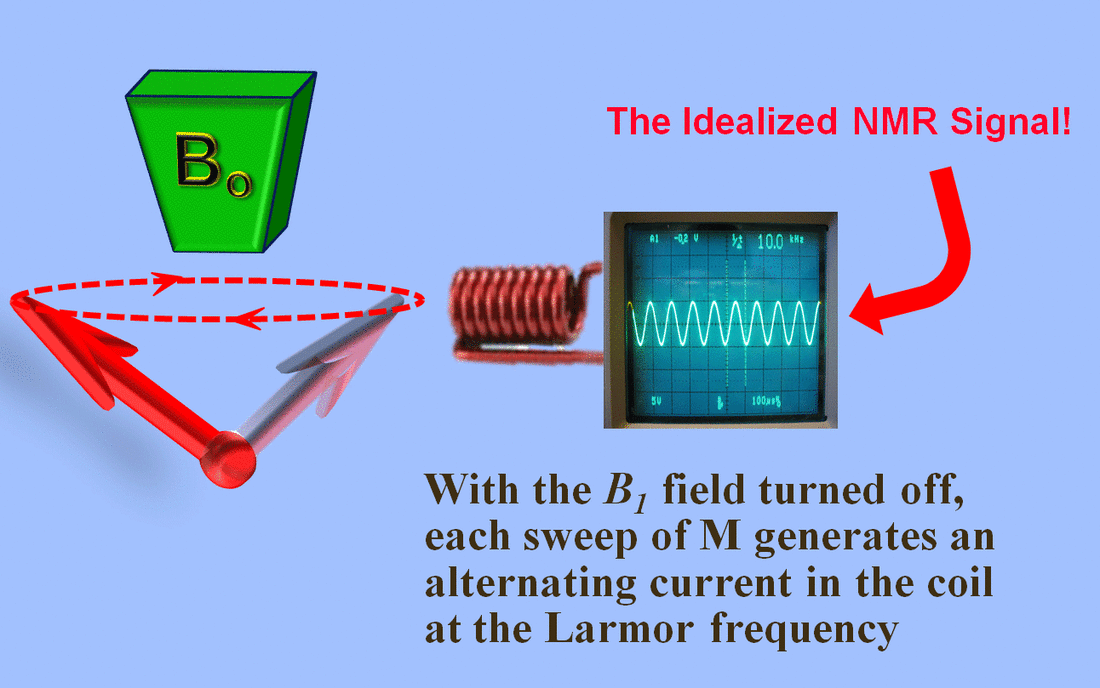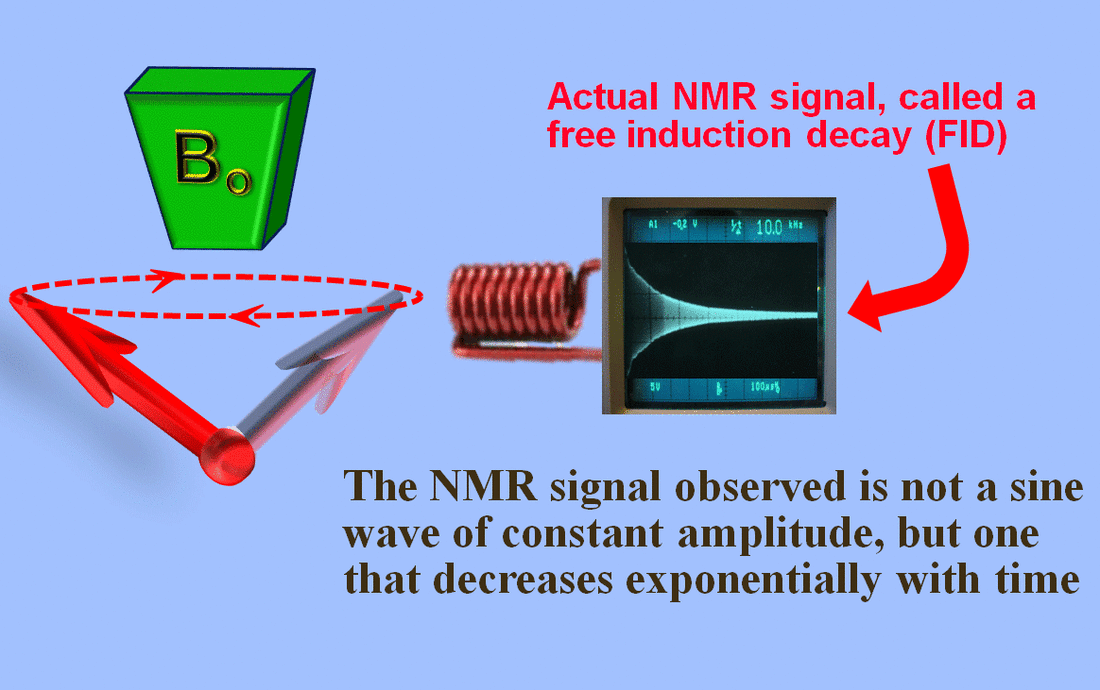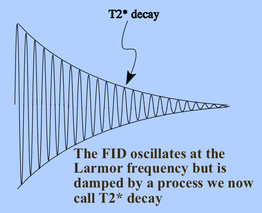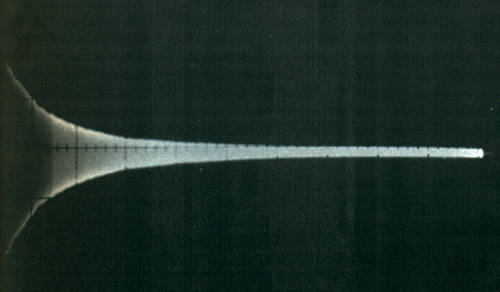Two years later, Bloembergen, Purcell, and Pound noted that immediately after the system had passed through resonance, small oscillations appeared on either side of the main absorption tracing that were named the "wiggles".
About the same time, Erwin Hahn, a graduate student at the University of Illinois at Urbana, was investigating pulsed NMR techniques. In pulsed methods the main magnetic field is held constant while an RF-field at the Larmor frequency is pulsed on and off. Immediately after the RF pulse Hahn observed a transient oscillation he recognized was equivalent to Bloembergen's "wiggles". Hahn called this signal the "nuclear induction decay" or "free induction," which today is commonly referred to as the free induction decay (FID).
|
As described in a previous Q&A the nuclear induction signal arises as the net magnetization (M) vector precesses around the z-axis (the direction of Bo). The transverse components of M generate a current in the receiver coil based on the Faraday-Lenz Law of electromagnetism. The signal is a sine wave oscillating at the Larmor frequency (ωo).
|
|
The NMR signal, however, does not persist forever. The initially coherent transverse components of M dephase as a result of both magnetic field inhomogeneities and intrinsic T2 mechanisms, incorporated in the concept of T2*-decay. The resulting signal is the FID, a damped sine wave of the following form
[sin ωot ] e-t/T2* |
The FID is just one of four basic types of NMR signals produced in different ways. These are listed below and described in more detail in subsequent Q&A's:
Advanced Discussion (show/hide)»
Sampling a frequency-encoded FID signal was one of the earliest projection-acquisition MR imaging methods performed by Lauterbur (1973) and others. FID sampling is still performed in laboratory NMR spectrometers but has largely evaporated from clinical MR use in favor of GRE and SE techniques. Expect to see a comeback, however, as we enter the world of ultrashort TE imaging, where FID sampling is enjoying something of a renaissance. FID sampling is also commonly used in MR spectroscopy of short T2 nuclei, such as 23Na and 31P. It has also found use in navigator strategies for motion correction.
In addition to an FID under certain conditions a small echo can also occur from a single RF pulse. This "single pulse spin echo" occurs approximately at time after the pulse as been turned off equal to the duration of the pulse tp. It has a characteristic "double hump" appearance and is due to spin isochromats whose natural frequency does not coincide with the frequency of the exciting pulse. This phenomenon was first described by Bloom in 1954. Other single pulse primary and secondary echoes have also been described including the "edge echo" and "nutation echo." These are of some interest to those studying solid-state crystal NMR systems.
Elster AD, Burdette JH. Questions and Answers in MRI, 2nd ed. St. Louis: Mosby, 2001, pp 46-53.
Bloembergen N, Purcell EM, Pound RV. Relaxation effects in nuclear magnetic resonance absorption. Phys Rev 1948; 73:679-712. (Paper where the "wiggles" is discussed)
Hahn EL. Nuclear induction due to free Larmor precession. Phys Rev 1950; 77: 297-8. (The first demonstration of an FID)
Hahn EL. Free nuclear induction. Physics Today, November 1953, pp. 4-9. (Early review)
What is a gradient echo, and how does it differ from an FID?





